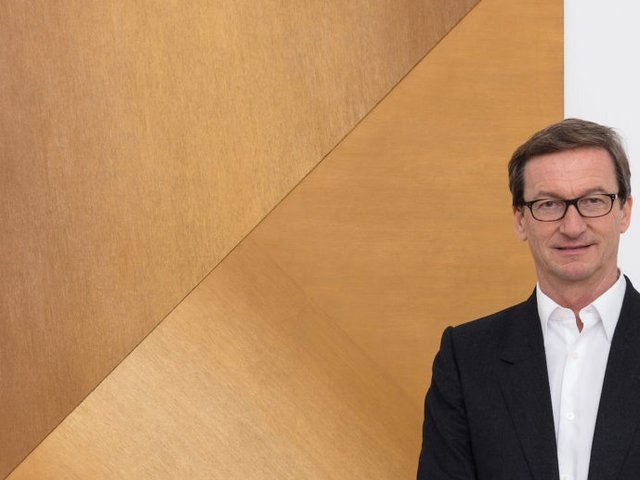Homecoming for Williams
The art world moves in mysterious ways. And so do artists. It’s never quite the same story when an artist switches galleries. As now, with Sue Williams (pictured below) leaving Zwirner to return to the 303 Gallery. Williams began showing her then fierce, cartoony paintings of nastiness visited upon women at the Amy Lipton Gallery. She moved to Lisa Spellman’s 303 Gallery and had her first show there in 1992. Five years ago she moved to Zwirner. There’s history here. David Zwirner (pictured below left) opened at 43 Greene Street in February 1993 when the art world was labouring through that recession. The son of Cologne dealer, Rudolf Zwirner, he is considered one of the good guys of the art world but he is a pro. “David has always got his ears open,” says Leonard Bullock who has shown with him. His confidants included artists connected with a SoHo space, the AC Project Room. A guy in the AC Project Room got a call when they were about to close. It was from the gallerist Christine Burgin. “She said: ‘Listen! I need to have transport tonight’,” Bullock remembers. “He said: ‘How much do you need to have transported?’ She said: ‘The whole gallery!’” The news reached Zwirner. He knew that Burgin’s next show was to be Franz West. Zwirner’s Franz West show was that October. The artist’s career prospered at the gallery. But in 2000 he moved to Gagosian. And now Sue Williams has moved too. “I’m happy,” she says. “But it’s hard. Because the other person feels bad. When I left Lisa it was because I was interested in a new, bigger place.” Perhaps in a leaner art world a smaller, safe place has its attractions too.
Multimedia factory on Bowery
On 14 January a show of work by artist Scott Alger will be installed in the 3,000 sq. ft ground-floor gallery space of Collective Hardware at 169 Bowery. The survival of Collective Hardware, which houses five storeys of towering multi-media ambition, should delight the New York art world, except that much of that art world is only dimly aware of Collective Hardware’s existence. Which is pretty much the way Ron Rivellini and Stuart Braunstein, who run the place, have wanted it. Some backstory: Rivellini, a young developer with family roots in the neighbourhood, bought a 20-year lease on the building with a partner three years ago. They had conventional plans to develop the property but this was the tottery pinnacle of the boom and the plans soon went pffft! The building is a cavernous joy, being the former Miner’s Vaudeville Theater, which was where unsatisfactory performers were actually hauled offstage by a hook. Rivellini realised that the arts could liven up moribund real estate and he called in Stuart Braunstein, an old acquaintance with a working knowledge of clubland. Collective Hardware was born. The second floor was soon one of the liveliest nocturnes downtown and there were the beginnings of an art space on the ground floor, as when they showed photographer, Layla Love, a young woman who has turned a grim history of abuse into powerful images. Their semi-formal opening was a show of photographs in September 2008 during Fashion Week. “It was a beautiful show,” says Braunstein. “Everyone came. Then they all went to Milan. No one bought anything. It was amateur night. I said to myself this is bogus! I want to have dinner parties with Warhols and Basquiats on the walls.” Precisely that took place during Fashion Week 2009. At the “Black and White Show”, which was organised by Daniel K, a byword for fashion diamonds, the walls were indeed hung with Warhols and Basquiats, as well as Stella, Irving Penn and Kara Walker. Rivellini says: “We were on such a high. Having that show here was a coup. Everything was working. And then the fire hit.” That was an electrical fire on the fourth floor on 6 October. Rivellini got called at 3.33 in the morning. Firemen were swamping the place. “I wanted to die,” says Braunstein. Collective Hardware was saved with funding from Daniel K, Philmore Anderson of Sahara Media Holdings and Sean Parker, co-founder of Napster and founding president of Facebook. The art projects now go on the ground floor. Movie-making, 24-hour TV and shows of vintage fashion will be on the other floors. The space will provide a “terrestrial environment” for the growing world of art activity on-line, Rivellini says. And if something doesn’t work—here comes that spectral hook.
Light sculpture for Las Vegas
Even old Las Vegas hands may be surprised to learn that the city has an art district. Well, it does and Dennis Oppenheim was one of 100 artists who competed to make a piece of public art that will also function as its gates. “One of the people on the jury was Dave Hickey,” Oppenheim says. “And he sometimes appears to not like anything. He is very hard to please. I began my presentation by saying that a lot of artists do not think they can do a work in Las Vegas, that it is already too loaded with images. But I knew that the site was not on the Strip. What turned out to be the art district was rather unsightly. But it is where you find a number of galleries. It’s like SoHo in the mid 60s.” So Oppenheim designed a piece in the spirit of the Strip, using the most popular local material: artificial light. He calls it The Paint Brushes. It won. I reminded Oppenheim that he had once told me about a first visit to David Salle’s studio where he had been startled to see brushes and paint. Oppenheim, then a land and body artist, had told Salle he thought such craft was history. Then whoosh! Neo-expressionism exploded. “How wrong could I be?” Oppenheim says. Paint Brushes will be installed next month.
Originally appeared in The Art Newspaper as 'Big is not best in current economic climate'


